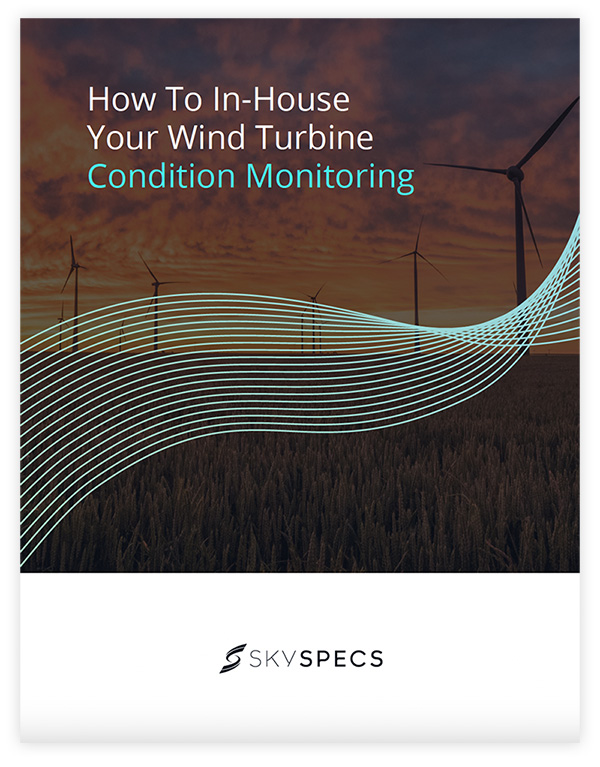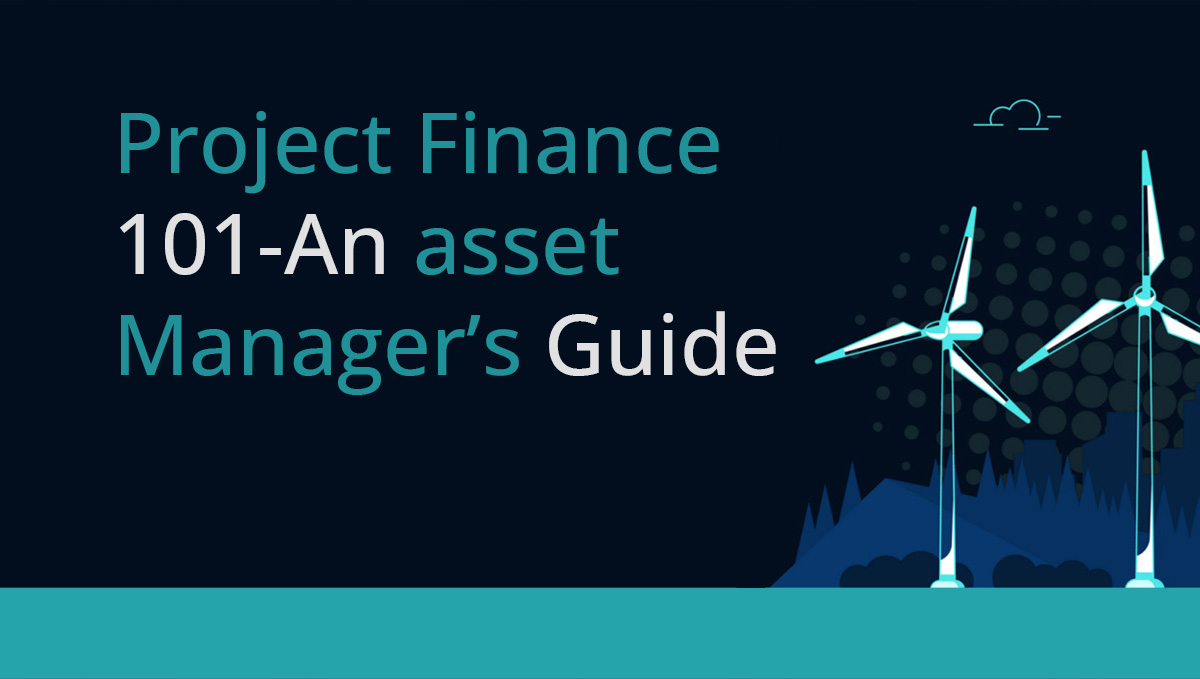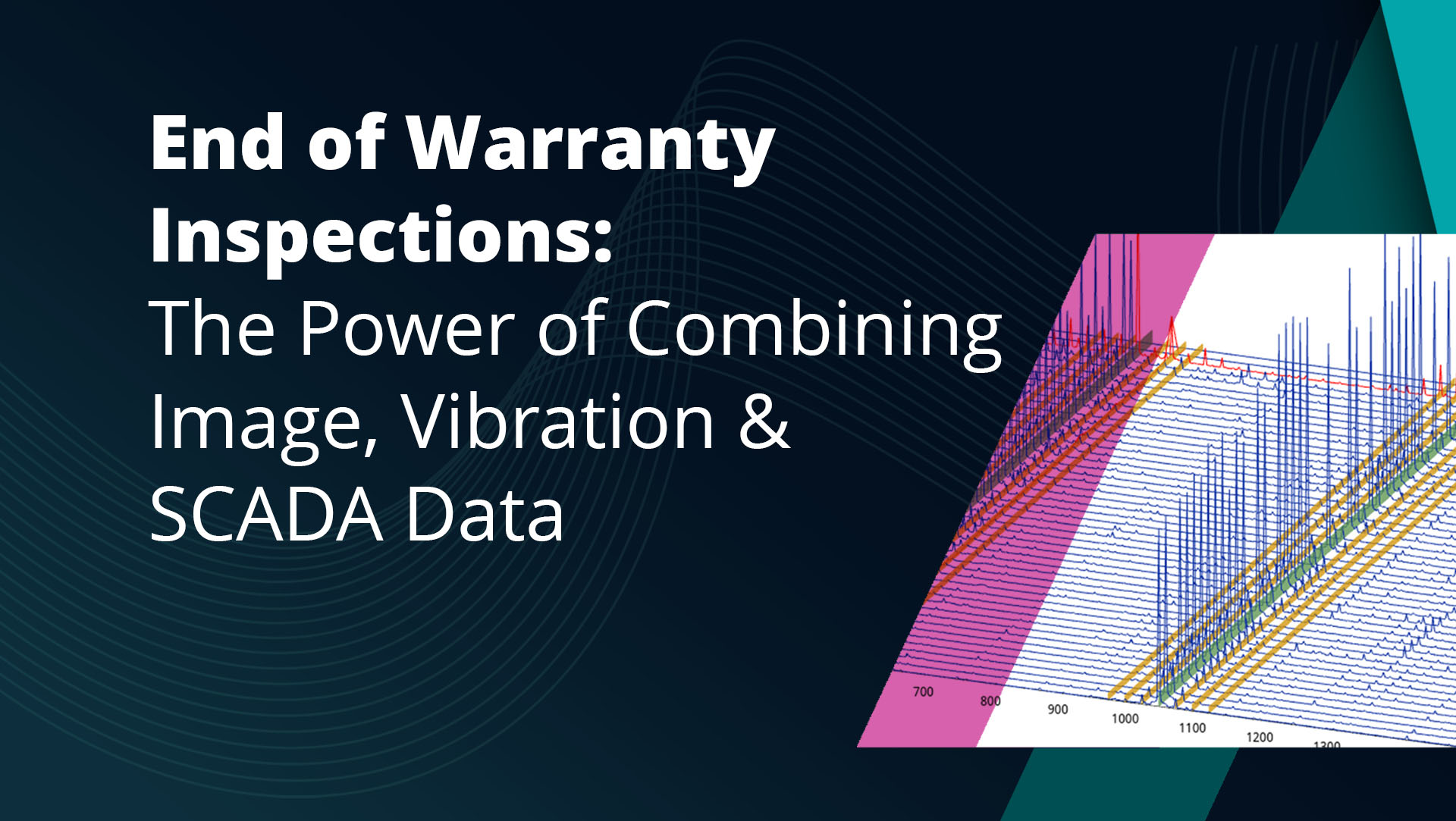A growing number of wind energy companies are considering shifting their wind turbine condition monitoring system (CMS) operations to an in-house model, citing the potential for better service quality, lower costs, increased knowledge and ownership of data, and much more. But attempting this shift without assistance is considered risky, and most organizations seek out a third party service provider to help guide them through the process and answer questions along the way.
However, not every third party provider of CMS services will be a good fit for your organization’s specific needs. Additionally, some might be lacking in technical support, industry experience, transparency, and more. For these reasons, finding a service partner that’s a good fit for your team and your industry is essential for a smooth transition.
Not sure what factors to look for when selecting a service partner for your wind turbine CMS? We’ll break down 4 main things to consider when selecting a third party provider and point out some red flags to avoid.
Ready to take the first steps to in-housing your CMS operations? We’re here to help!

1. Excellent technical support
A high level of technical knowledge and support is essential for a good partnership with a service provider. To determine if a third-party provider is a good fit for your organization, consider asking yourself and your team some of the following questions before entering an agreement:
- Does the company have a solid understanding of the software and processes you need help onboarding with?
- Are they easy to reach during your company’s working hours?
- Does the company have sufficient staff available during the working hours in your local time zone to quickly answer your questions?
- Is their tech stack easy to learn and use?
- Would working with them cause any difficult language or cultural barriers?
Your organization needs an in-housing partner that is committed to high-quality support when undergoing a challenging transition with valuable assets. If their lack of knowledge or responsiveness forces you to waste time looking for answers, your in-house transition will be much more challenging.
2. High level of expertise and experience
As mentioned in the previous section, it’s essential to choose a service partner with sufficient experience and industry knowledge to help with your in-house shift. That way, you’ll have help guiding your organization through the process and any roadblocks that may come up. Some important factors to consider before choosing a company as your in-housing partner include:
- Technical expertise: Ideally, your in-house CMS partner should have in-depth knowledge of the equipment and systems they will monitor. They should also have experience with the latest technology and techniques in CMS.
- Industry experience: Finding a partner with wind-specific experience is crucial. They will have a more well-rounded understanding of the unique challenges and requirements of your equipment and operations than a company with no prior wind industry knowledge.
- Track record of success: Seek out a company with a proven track record of successfully identifying and addressing equipment failures. Ask them how they have helped other customers improve their equipment reliability and reduce downtime.
- Certifications and accreditation: Ensure that a potential service partner holds relevant accreditations in the field of condition monitoring. That way, you have some assurance that they follow industry standards and best practices.
- Strong communication and customer service skills: A solid condition monitoring partner should be able to clearly communicate their findings and recommendations to customers. These suggestions should also account for the specific needs and pain points that you communicate to the service provider.
When you have identified a service provider with sufficient expertise and experience to guide your organization through the shift to an in-house model, you can move forward to discussing contract terms.

3. Flexible contract structure
Choose a service partner that is flexible enough to meet your organization where it’s at in the in-housing process. It’s important to avoid locking yourself into a contract that doesn’t make sense for your company or charges you for add-ons that you don’t need.
Ideally, the service provider your organization chooses to work with should provide multiple options within their service offering that can help along the way, such as in-housing support, end user support, someone to lean on temporarily if resources become tight, and more. They should enable your organization to benefit from an in-house strategy as much as possible, but without unnecessary add-ons. You don’t want to be left behind after the initial transition is completed or be pressured to sign a long-term contract when all you need is short-term support.
Will a potential service partner help you transition to an independent software license? If needed, are they willing to stay on to provide support once the initial shift has been made?
Some other important questions to ask potential partners include:
- What is the pricing structure, and what is included in the service contract?
- What is your process for transitioning from a third-party data analysis service to an in-house analysis model, and what kind of support do you offer to ensure a smooth transition?
- What is the cost of transitioning from a third-party data analysis service to an in-house analysis model, and how much training is required?
- How do you collect and analyze data for condition monitoring?
- How do you communicate and report findings to customers?
- How do you handle customer complaints and disputes?
- What types of CMS systems do you have experience monitoring?
In addition to factors your team should look for in a service provider, there are some red flags to avoid. Major red flags include:
- Limited scope of services: Be wary of contracts that only cover a limited range of services or equipment. This may indicate that the partner has hidden costs.
- Hidden costs: Look for additional costs or fees that are not clearly outlined in the contract. This could include costs for data setup, configuration of the software, and access to a management system.
- No termination clause: A contract without a termination clause may make it difficult to end the partnership mid-term if you are not satisfied with the services provided.
- Financial penalties: A contract with financial penalties to exit the contract mid-term can put your organization in a tough position if the services are not what you expected.
If you notice any of these red flags in a contract, it’s best to seek another service provider.
4. Transparency
Transparency is an essential quality of a good service partner. A trustworthy company should show you how they gather data and provide recommendations. Transparency consists of three main elements:
- Openness about how and why a recommendation is made
Whenever your service partner makes a recommendation, they should always explain to your team exactly how they reached it. This ensures that the data, methods, and results of the analysis can be understood and verified.
Openness about recommendations will also help your team be more aware of any limitations in the data or analysis, which can be used to improve overall accuracy and credibility. It will give your organization more trust in results, which can improve decisions or actions based on them. - Data is accessible at all times
A service provider should give your team access to your data anytime and anywhere. Making data-driven decisions is easier when you have the ability to access and view data on your own time instead of always relying on a third party to provide it for you.
Additionally, having consistent access to your data can provide faster access to insights, which can be especially beneficial for time-sensitive decisions. Features like self-service portals allow multiple users to access and collaborate on the same data and analysis, which can increase productivity and improve decision-making. - Knowledge sharing
A reliable service partner should always be open and collaborative about insights they’re finding from your data. In addition to the results, your organization should have access to the data and methods used in any analysis to ensure that everyone understands exactly how conclusions were drawn. Your team should also be made aware of any assumptions made during the analysis, which can help to understand the results in context.
Starting your in-house CMS transition
Before you can officially begin an in-house shift, there are several resources and processes you’ll need to line up to help you prepare for and navigate the challenges of the transition. This includes having company leadership on board, hiring the necessary headcount and training them, determining which assets to shift first, and more. Solidifying these factors can be difficult, which is why partnering with a great service provider can save you a ton of headaches.
Once you have found the right service partner for your organization, the move to in-house condition monitoring is an excellent way for your company to take operations to the next level and prepare for the anticipated growth of the renewable energy industry.
As stated in this post, a quality service provider should have great tech support, plenty of industry experience, a flexible contract structure, and transparency about how they operate.
SkySpecs CMS Services has all of the above and more. Our software is easier to use and more intuitive than other options on the market, and we will meet you wherever you are in the in-housing process.
Ready to take the first steps towards exploring an in-house model?




